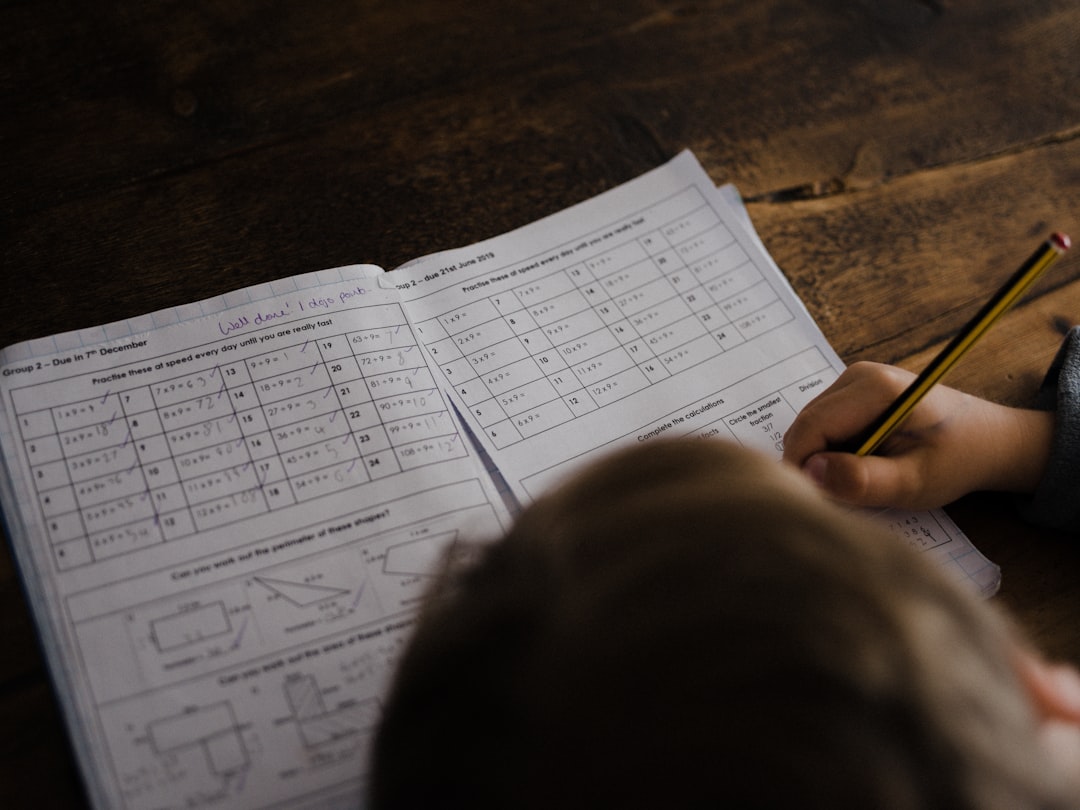Table of Contents
Helping kids with math can feel challenging, especially with unfamiliar teaching methods. Between new strategies, standardized tests, and the volume of information, it’s normal to feel lost. This post offers practical advice and relatable examples for parents wanting to support their child’s math success, even if they don’t feel confident in their own math skills.
Helping kids with math isn’t about becoming a math expert. It’s about fostering an environment where they feel safe exploring, questioning, and even struggling. A 2017 study in School Science and Mathematics linked positive parental attitudes to children’s math attitudes. So, a can-do spirit can make a big difference for kids math.
The Evolving Landscape of Math Education
Many of us remember math class as endless drills and worksheets. This method led some to label themselves as “not math people” because it prioritized memorization over understanding math. Math today just like education is evolving with the use of technology, math resources, and the standards that are attached to a specific grade level.
Understanding Your Child’s Math Challenges
Helping kids with math can be tough. But before you jump in, it helps to understand where they’re struggling. This is the first step to giving them the right support.
Sometimes, kids have trouble with the basics. Maybe they don’t fully grasp addition or subtraction. This can make it hard to move on to more advanced topics like multiplication and division. Or perhaps they understand the concepts, but make simple calculation errors. This can be frustrating for both you and your child.
Other times, the problem isn’t the math itself. It could be how the math is taught. Some kids learn better through hands-on activities. Others might thrive with visual aids. This is why understanding your child’s learning style is so important.
Another common challenge is math anxiety. Some kids feel so stressed about math that they freeze up. This makes it hard to focus and learn. If your child has math anxiety, it’s important to create a supportive learning environment. Make sure they know that it’s okay to make mistakes. Learning from mistakes is part of the process. Focus on their effort, not just the outcome. This can help them feel more comfortable and confident.
You can also talk to their teacher. Teachers often have insights into a child’s learning challenges. They can suggest specific strategies to help your child at school and at home. They can also tell you if they’ve noticed signs of math anxiety in the classroom. A teacher can be a valuable partner in helping your child succeed in math.
It’s also helpful to look at their homework or have them solve a specific problem related to what they are learning. This can give you clues about specific areas where they’re struggling. Do they rush through problems? Do they skip steps? Paying attention to these details can help you pinpoint the problem.
Helping kids with math takes patience and understanding. But by taking the time to figure out the root of their challenges, you can give them the support they need to thrive. And once you understand where they are struggling, you can start finding solutions.

Why “New Math” Matters
Modern math instruction moves away from rote learning. It focuses on “number sense,” a deep grasp of how numbers relate. This approach is vital for kids learning math in elementary school.
This cultivates mathematical flexibility, letting kids choose the best approach for each problem. It’s like having different routes depending on the destination—not just one memorized path. This helps with unfamiliar problems and connects knowledge across math topics, such as multiplication and area calculation. This helpful article explains nine “new math” methods and illustrates common models. Use these resources when working with your child to teach math.
Helping Kids With Math: Strategies for Success
Helping with math homework can trigger parental math anxiety. But creating a supportive math learning environment doesn’t mean becoming a math whiz or solving complex equations. Start by listening, asking questions, and understanding math concepts.
Open communication is vital. Regularly connect with your child’s teacher to create a successful partnership supporting your child’s learning math.
Using Real-World Applications
Helping kids with math can be easier if you use real-world examples. This makes math more engaging and less abstract. It helps kids understand why math matters in everyday life. They start to see the practical side of learning multiplication, division, fractions, and even geometry.
Cooking is a great example. If you’re doubling a recipe, kids use multiplication. They multiply each ingredient by two. This helps them practice their times tables without even realizing they’re doing math! This also helps kids with math word problems.
Grocery shopping provides many opportunities to help kids with math. Comparing prices involves division and decimals. Figuring out discounts uses percentages. Estimating the total cost involves addition. Kids will also use subtraction when they figure out the change they’ll receive. These activities help them build their mental math skills.
Building projects are perfect for exploring geometry. Kids learn about shapes, angles, and measurements. Whether they’re building a birdhouse or a Lego castle, they use spatial reasoning. This helps them visualize and manipulate objects in their minds. This also makes math more fun for kids.
Even playing games can help kids with math. Board games often involve counting, strategy, and probability. Card games like poker teach kids about numbers and combinations. This can help kids learn math facts while playing games.
Sports also offer chances to help kids with math. Keeping score in baseball involves addition and subtraction. Calculating batting averages uses division. Measuring distances in track and field involves units of measurement. Kids see how math is used in sports they enjoy.
Using these real-world applications can change how kids view math. Math becomes less of a chore and more of a useful tool. It also makes math more fun for kids because it connects to their interests.

Talk It Out, Be Curious and Be Realistic:
Discuss what your child is learning and how math connects to their interests. Talking about math in everyday situations can help with basic math concepts and hard time understanding concepts. It’s essential for basic math and early learning stages.
Don’t feign understanding when faced with tough questions. This impacts student ability and their ability to practice math.
A 2015 study highlights the importance of focusing on student ability to facilitate further math learning and skill development across all grade levels. Instead of giving answers, guide your children to resources like Khan Academy for video tutorials or Understood.org for troubleshooting articles. This process builds memory and math confidence. Encourage kids learn through various channels, like learning online. This fosters conceptual understanding, critical thinking, and helps them grasp how math works. It will even allow you to see the improvements your child learned. It’s also about fostering a positive experience for everyone.
Make Math Fun and Relevant
Use games like ST Math , which boosts visual comprehension, or apps like Funexpected Math. Both target grades K-8, fostering early math engagement and offering various problem levels tailored to individual student needs.
Practice math regularly, connecting it to everyday life. Turn word problems into relatable stories. For instance, turn elapsed time questions into: “If it’s 7:00 a.m. and Minecraft starts in four hours, can we walk the dog and still arrive 10 minutes early?” Consider number games on a desktop if paper-and-pencil practice doesn’t appeal to your child. Explore teaching aids like number lines for a visual approach.
Breaking Down Complex Problems
Many kids struggle with math. This is often because problems seem big and scary. But what if we could make these problems smaller? This can help kids feel less overwhelmed and build their confidence. It’s like eating a giant pizza. You wouldn’t try to shove the whole thing in your mouth at once! You’d cut it into slices.
We can do the same thing with math problems. Let’s look at an example. Imagine your child has this problem: 74 + 28 = ? They might not know where to start. But we can break it down. First, look at the tens place. We have a 7 and a 2. We know that 7 tens plus 2 tens equals 9 tens, or 90. ⚠ Highly likely to be human.You’re all set! This content reads as if it is human-written.Write that down. Now, look at the ones place. We have a 4 and an 8. 4 plus 8 equals 12. Write that down. Now add 90 and 12 together. This gives you 102. So, 74 + 28 = 102.
This method helps kids with math by showing them that big problems are really just small problems put together. It also helps them practice their basic math facts. Here are a few more tips for helping kids break down problems:
- Read the problem carefully. Sometimes kids get stuck because they rush through reading the problem. Encourage them to take their time and understand what’s being asked.
- Circle important numbers and words. This helps them focus on the key information they need to solve the problem.
- Draw a picture. Sometimes, a visual representation of the problem can make it much easier to understand. This works especially well with word problems.
- Write down each step. This helps kids stay organized and track their progress. It also lets them see where they might have made a mistake.
- Ask questions. If they’re stuck, encourage them to ask for help. There’s no shame in needing some guidance.
Breaking down problems can truly change how kids see math. It gives them a helpful way to deal with challenges. With practice and patience, kids can build their math skills and start feeling good about solving problems.

A Word of Caution:
A child struggling with math might still be developing certain skills. Additional instruction or professional guidance might be necessary, particularly in elementary school. Consider seeking local resources within your school district for extra support.
Math anxiety, affecting both children and adults, or undiagnosed learning differences like dyscalculia, can contribute to math difficulties. Consult teachers, school psychologists, or an experienced educator for one-on-one tutoring . Engage in consistent and productive communication with your child’s teacher for collaborative support and improved school solutions.
Conclusion
Helping kids with math is a journey. It involves shifting learning perspectives, incorporating games, and discussing their challenges. Open communication among all support roles, including understanding math from the teacher’s perspective, is crucial.
A positive math attitude is contagious. Your enthusiasm opens doors for exploration and understanding of mathematics. It will improve math instruction, address math problems, build important math skills, and reinforce the things that child learned in math class. By encouraging a child learn at all grade levels, whether at elementary school, high school, or with learning programs, we support students understand their math homework and find solutions to the issues.
By understanding modern teaching methods, asking insightful questions, using interactive resources, and seeking support, you create opportunities for your child to experience those “aha.” math moments. You contribute to the synergy between teaching math and its application. These practices, from practicing basic math to solving problems mentally, empower kids math abilities and show them how math works in their everyday lives. The goal is not merely solving math problems but also understanding math at a deep conceptual level. A consistent schedule for their time math can benefit both their learning of new math practices and solidify math concepts from prior instruction.

